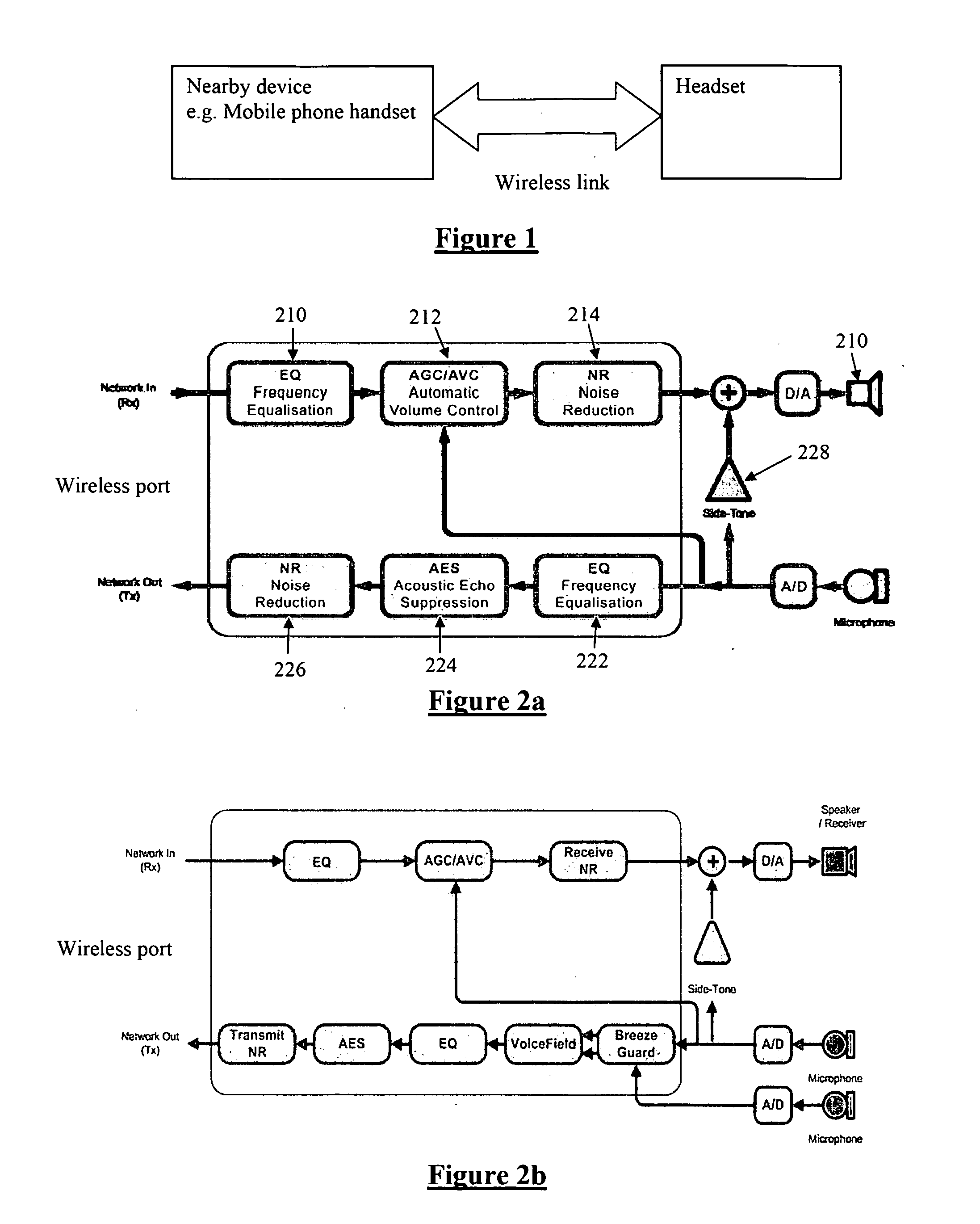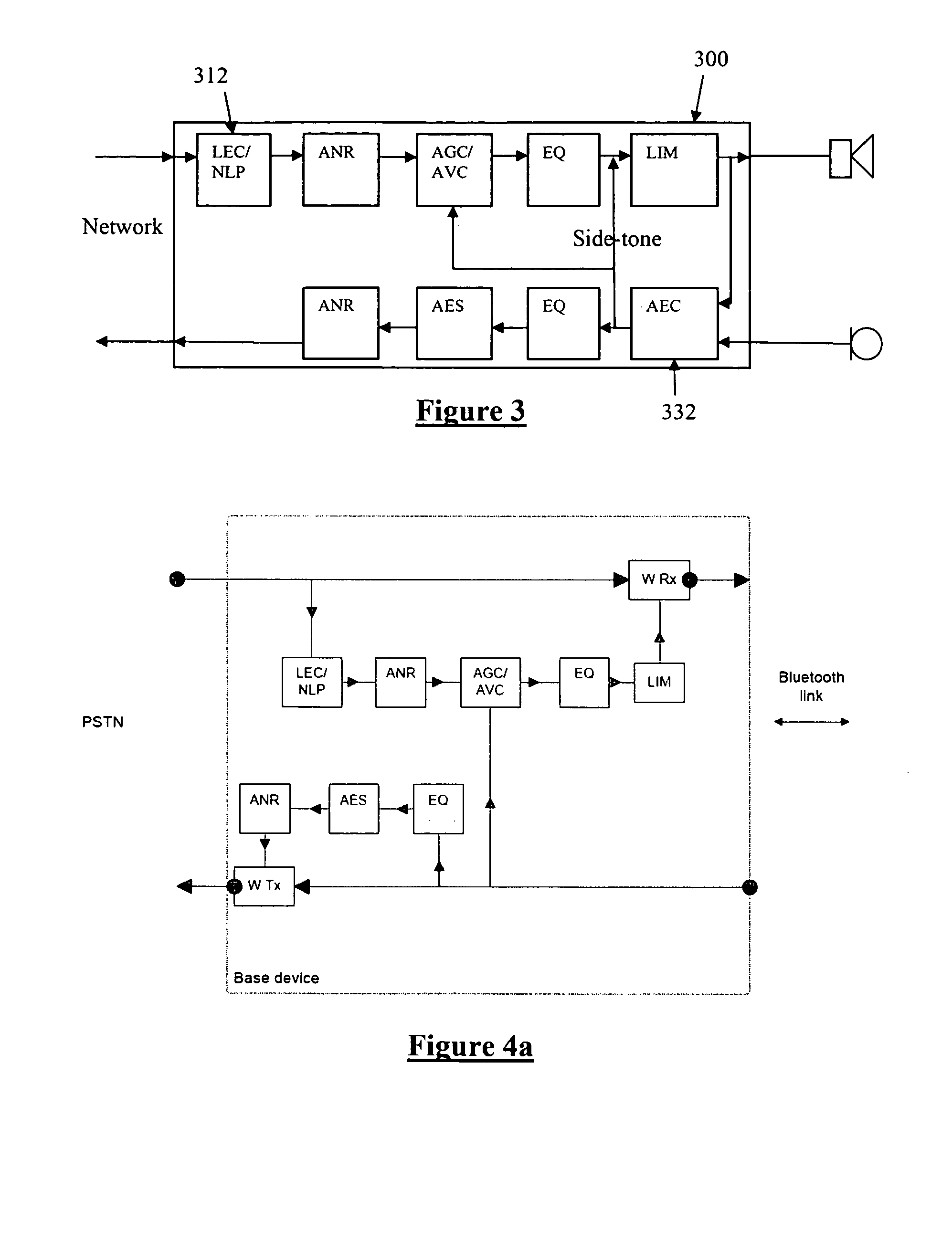Headset distributed processing
a technology for distributed processing and headsets, which is applied in the field of headsets, can solve the problems of limiting the number of microphones which can be used, the size of the headset imposes limits on the physical separation between the microphone and the speaker of the headset, and the sophisticated digital signal processing and the number of different signal processing algorithms which can be carried out on-board
- Summary
- Abstract
- Description
- Claims
- Application Information
AI Technical Summary
Benefits of technology
Problems solved by technology
Method used
Image
Examples
Embodiment Construction
[0045]FIGS. 2a and 2b illustrate a number of desirable DSP functions for an example state-of-the-art headset application. Receive signal processing includes frequency equalization 210 to compensate for output transducer characteristics, automatic gain control 212 to compensate for variability in the received signal level, automatic volume control 212 to compensate for variable ambient noise in the listener's environment, noise reduction 214 or noise cancellation to improve sound quality of the received signal, and line echo cancellation. Transmit signal processing includes frequency equalization 222 to compensate for microphone characteristics, automatic gain control 212 to compensate for variability in speaking level and variability in the microphone position and alignment with the speaker's mouth, noise reduction 226 to remove ambient noise from the transmitted signal, acoustic echo cancellation 224, multiple-microphone noise reduction, and side-tone 228 with howling suppression (...
PUM
 Login to View More
Login to View More Abstract
Description
Claims
Application Information
 Login to View More
Login to View More - R&D
- Intellectual Property
- Life Sciences
- Materials
- Tech Scout
- Unparalleled Data Quality
- Higher Quality Content
- 60% Fewer Hallucinations
Browse by: Latest US Patents, China's latest patents, Technical Efficacy Thesaurus, Application Domain, Technology Topic, Popular Technical Reports.
© 2025 PatSnap. All rights reserved.Legal|Privacy policy|Modern Slavery Act Transparency Statement|Sitemap|About US| Contact US: help@patsnap.com



